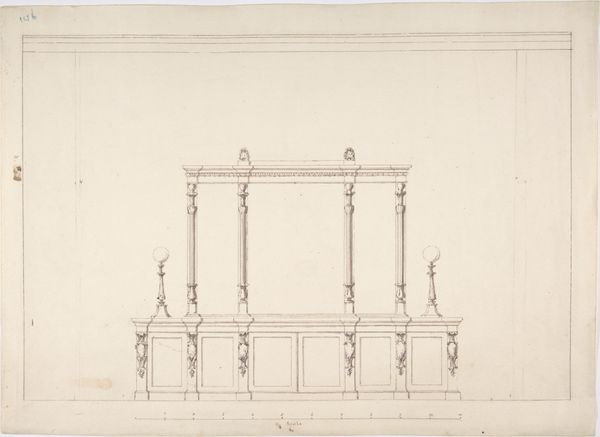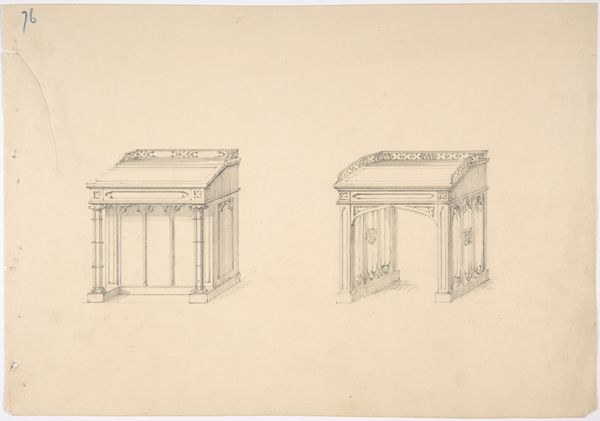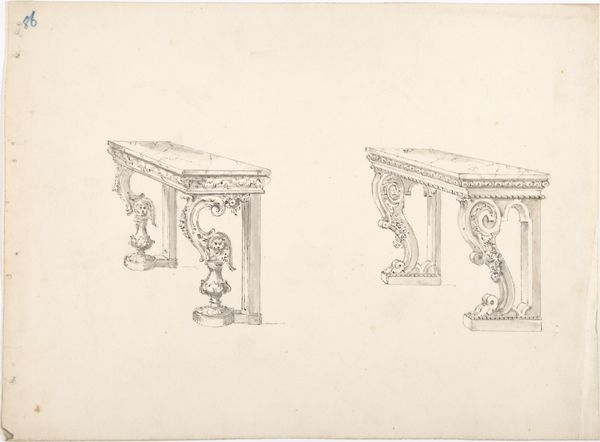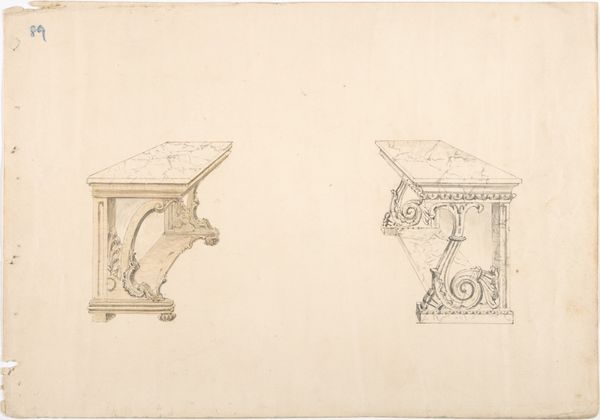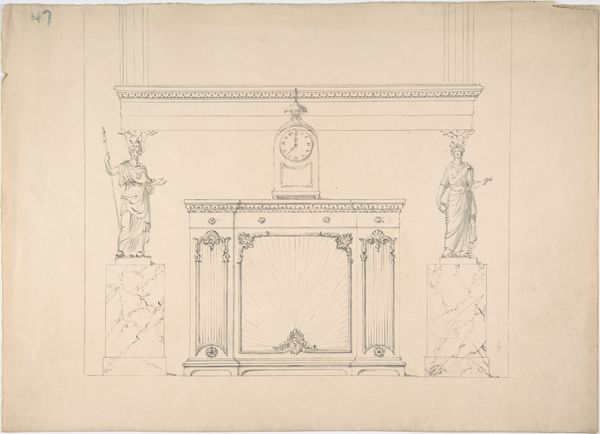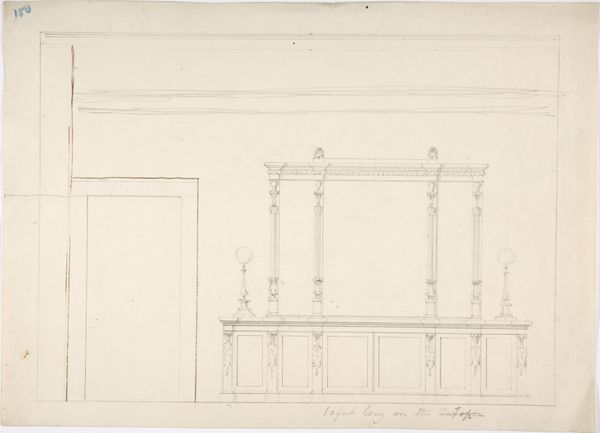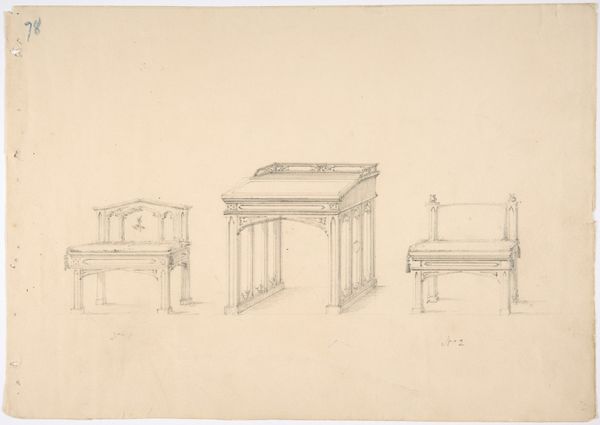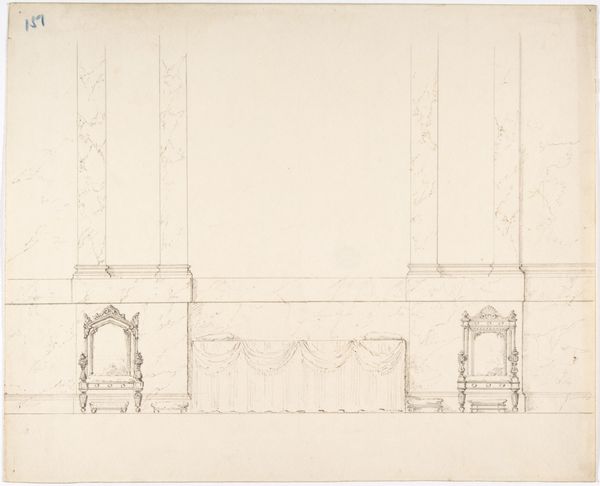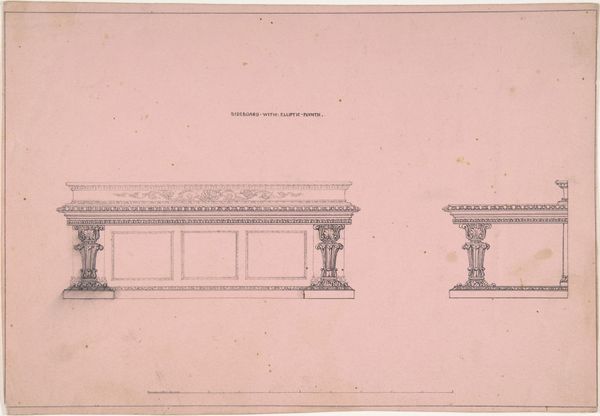
Design for a Cabinet with Columns and Inset Fabric Panels: Elevation and Side View 1800 - 1850
0:00
0:00
drawing, print, pencil, architecture
#
drawing
#
neoclacissism
# print
#
form
#
geometric
#
pencil
#
line
#
architecture
Dimensions: sheet: 10 3/4 x 14 13/16 in. (27.3 x 37.7 cm)
Copyright: Public Domain
Curator: This meticulous drawing, dating from 1800 to 1850, presents an architectural proposal: "Design for a Cabinet with Columns and Inset Fabric Panels: Elevation and Side View". It’s currently housed here at the Metropolitan Museum of Art. Editor: It strikes me as remarkably restrained. The artist’s commitment to linearity emphasizes geometry and order, offering the viewer a carefully balanced composition. Curator: Indeed. We can understand this design through the lens of Neoclassicism, a period deeply invested in reviving the artistic ideals of ancient Greece and Rome. The form of this object suggests this and could serve to further explore the politics of the era, how art acted in direct response to revolution and the quickly shifting values around nationhood at the time. Editor: Precisely, but consider the intrinsic visual rhythm established by the columns. The use of repeated vertical elements, combined with the horizontal lines of the cabinet's base and top, creates a sense of classical harmony and structural clarity. The play of solid and void further animates it—note the empty circles near its upper portions. Curator: The decision to incorporate fabric panels speaks to broader themes of identity and the increasing comfort of bourgeois life and the emphasis on material culture during that time. Think about the labour relations that are implied in the decision to adorn oneself in expensive manufactured goods! Editor: However, I would focus on how the subtle gradations in the pencil work delineate the shape, form and the different textural possibilities of this object, wouldn’t you agree? Curator: These objects weren’t made in a vacuum, and I would argue that our reading would be limited if we focused too intensely on visual forms! Editor: And I would say a socio-historical approach misses crucial information if not coupled with structural analysis of art itself. Curator: Very well. Either way, looking at this artwork teaches us a lot, both about aesthetics and the worlds they grow out of! Editor: Precisely, from aesthetic to its potential construction to an entire period: that is a power only art holds!
Comments
No comments
Be the first to comment and join the conversation on the ultimate creative platform.

